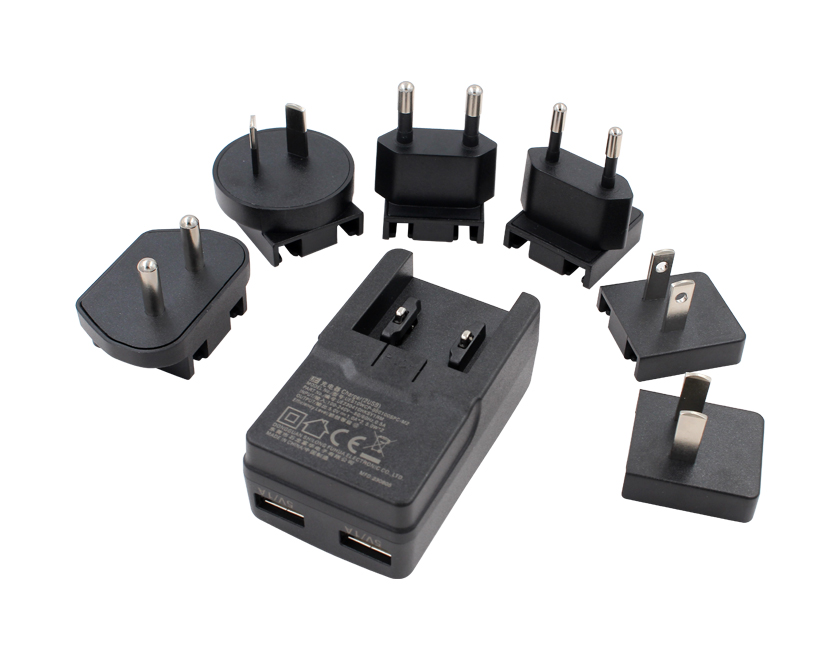Quick chargers have become an essential component of modern life, enabling quick and efficient charging of various electronic devices. As the demand for faster, more reliable charging solutions grows, the functionality of Quick chargers continues to evolve. This article explores the main functions of Quick chargers and their significance in the digital era.
1. Rapid Charging Speeds
The primary function of a fast charger is to significantly reduce the time required to charge devices.
High Power Delivery: Quick chargers provide higher wattage compared to standard chargers, enabling quicker energy transfer.
Adaptive Charging: Many Quick chargers can adjust the power output based on the device's requirements, ensuring optimal charging speeds.
Advantages: Saves time and improves convenience, particularly for users on the go.
2. Compatibility with Multiple Devices
Quick chargers are designed to work seamlessly with a variety of devices, making them versatile and user-friendly.
Universal Standards: Many Quick chargers support widely adopted standards such as USB Power Delivery (PD) and Qualcomm Quick Charge.
Device-Specific Optimization: Some chargers are equipped with protocols to optimize charging for specific brands or models.
Advantages: Eliminates the need for multiple chargers and ensures compatibility across devices.
3. Energy Efficiency
Modern Quick chargers are designed to be energy-efficient, reducing power consumption while maintaining high performance.
Smart Charging Technology: Automatically adjusts power output to minimize energy wastage.
Standby Power Reduction: Many chargers consume minimal energy when not in use.
Advantages: Contributes to lower electricity bills and supports environmental sustainability.
4. Overcharging and Overheating Protection
Safety is a critical function of Quick chargers, ensuring that devices are charged without risk of damage.
Built-In Protection Mechanisms: Includes safeguards against overcharging, overheating, and short circuits.
Temperature Control: Many Quick chargers monitor and regulate temperature to prevent overheating.
Advantages: Enhances device longevity and provides peace of mind to users.
5. Compact and Portable Design
Quick chargers are often designed with portability in mind, making them convenient for travel and everyday use.
Lightweight Construction: Compact designs make them easy to carry.
Foldable Plugs: Many models include foldable prongs for enhanced portability.
Advantages: Ensures accessibility to fast charging wherever you go.
6. Multi-Port Charging
Many Quick chargers feature multiple output ports, enabling simultaneous charging of several devices.
USB-A and USB-C Ports: Supports a mix of legacy and modern connections.
Dynamic Power Allocation: Balances power delivery across multiple devices for efficient charging.
Advantages: Ideal for families or users with multiple gadgets.
7. Integration with Wireless Charging
Some Quick chargers combine wired and wireless charging capabilities, offering greater flexibility.
Qi Wireless Charging: Supports wireless charging for compatible devices.
Hybrid Models: Include both wired and wireless options in a single unit.
Advantages: Simplifies charging setups and reduces cable clutter.
8. Support for Advanced Charging Technologies
Quick chargers often integrate cutting-edge technologies to enhance performance and usability.
GaN Technology: Gallium nitride chargers are smaller, more efficient, and produce less heat.
Bidirectional Charging: Some chargers support power delivery both to and from devices, enabling power-sharing.
Advantages: Keeps pace with advancements in electronic devices and charging needs.
Quick chargers are more than just tools for speeding up the charging process; they embody a range of functions that enhance user convenience, safety, and energy efficiency. From rapid charging speeds and device compatibility to multi-port and wireless integration, Quick chargers address the diverse needs of modern users. As technology continues to evolve, Quick chargers will remain a pivotal accessory, driving innovation and improving the way we power our devices.







